For the greater part of this past summer, I wore six smart rings at once. I wanted to see which was best, and the Oura Ring Gen 3 was the clear winner. Well, it’s been about two weeks since my experiment ended, and there’s now a new winner: the Oura Ring 4.
Technology
Oura Ring 4 review: still on top — for now
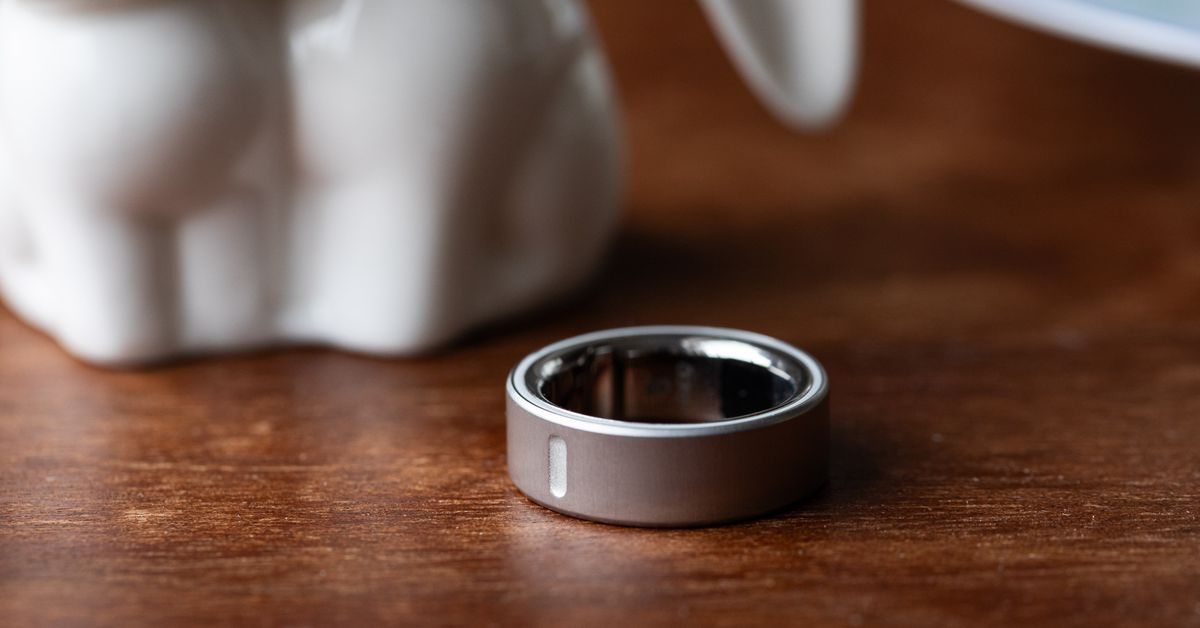
Oura has been the top dog in smart rings for the past decade. Sure, there’s been a smart ring renaissance this year, but its rivals are mostly either just getting into the game or launching a second version. This is the fourth Oura Ring. Oura has spent years collaborating with researchers and conducting its own studies. It’s the most readily available at third-party retail stores in the US; it’s the one wellness influencers keep flaunting in TikToks; and it’s seen on the fingers of A-list celebrities. In response to increased competition, Oura has launched half a dozen new features in the past 12 months. And now, Oura is closing out 2024 with several hardware and software refinements.
The Oura Ring 4 extends the company’s lead over the competition. The question is how long Oura can maintain it when its rivals cost less, eschew subscriptions, and have started innovating in new directions.
Slightly better in every way
Wearing the Oura Ring 4 is better than the Gen 3. Just not by much.
The Oura Gen 2 and Gen 3 rings had resin interiors with domed sensor bumps. The fourth-gen ring is made entirely of titanium, and the inside is flatter, with recessed sensors. It might not seem like it, but this is impressive engineering for a device so small. Compared to titanium, the resin in older rings diffused light from the sensors in a less precise way. Since rings naturally rotate during the day, it’s also easy for those sensors to move out of proper alignment. That’s partly why the previous Oura Rings had raised sensor bumps — they ensured good skin contact to mitigate those factors.
This time around, Oura’s introduced a new Smart Sensing algorithm that increases the number of sensor signal pathways from eight to 18. The sensors are placed asymmetrically to allow for a variety of distances and measurements. Basically, it now matters less if your ring rotates and better accounts for the fact that everyone’s fingers are different. This also means you don’t need those sensor bumps anymore.
My brain appreciates all the engineering sweat and tears that went into making this possible. Technologically speaking, Oura is flexing on its rivals. But practically speaking, it means close to diddly squat for the average wearer. Ninety-nine percent of the time, wearing the Oura Ring 4 felt the same as the Oura Ring Gen 3 and the Gen 2 before that. The only time I noticed a difference was when I felt bloated. I have knobby knuckles, and the sensor bumps on older Oura Rings could be painful when trying to take the ring off. It was a relief to not have that problem this time around.
Design-wise, this all-titanium ring is nice but not dramatically different from other premium options like the Samsung Galaxy Ring or the Ultrahuman Ring Air. You’ll notice more of a difference if you’re coming from older Oura models with flat or angled tops. All of the fourth-gen rings are fully round. This isn’t new — Oura introduced fully round versions of the Gen 3 in 2022 — but I’ve found it to be more comfortable. If you are mulling an upgrade, I highly recommend trying the new sizing kit first. I was a size 8 in the old rings, and now I’m a size 9. Plus, Oura’s size range has four new options, spanning sizes 4 to 15. If you were previously a size 6 or 13, you may find one of the newer sizes fits you better.
Another improvement: battery life. You can now get up to seven or eight days on a single charge. I’ve been able to get about 6.5 days, even with the power-guzzling blood oxygen sensing feature enabled. With a Gen 3, I got three to four days. Again, your mileage will vary depending on ring size. (Larger size, larger battery.) This is a significant bump, though I did get longer with the first-gen RingConn and from the Samsung Galaxy Ring when it was paired with a smartwatch.
Speaking of battery, Oura’s updated the charging dock. It’s larger, metal, and looks sleeker than previous docks. Unfortunately, my hangry cat had no problems knocking it off my nightstand. I wish Oura had opted for a more convenient charging case like many of its rivals, but alas. Maybe next time.
Software and science
Oura’s hardware isn’t that much better than the competition. I maintain the Galaxy Ring’s concave shape is more comfortable, and its charging case more convenient. The Evie Ring’s open-gap design is also fetching and clever for those of us prone to bloating. But where Oura trounces everyone else is software and its commitment to science, both in conducting and communicating it.
Let’s start with software. The app has had a much-needed redesign. Oura released several new features and metrics in the past year, turning the dashboard into a cluttered mess. Now everything’s been streamlined into three tabs: Today, Vitals, and My Health.
The Today tab contains shortcuts to specific metrics, a timeline of all your daily activity, and cards that highlight different things (e.g., sleep score, readiness, etc) depending on the time of day. Vitals is where you’ll find all your metrics, albeit in a more digestible format. My Health is where you’ll find longer-term health trends and reports. All redesigns take a hot second to adjust to, but overall, I’ve found this to be a helpful reorganization.
Another needed improvement: automatic activity detection has been expanded to 40 activities. (Oura lists roughly 30 of them here.) This makes the ring a much better standalone activity tracker, especially since enabling location permissions will also generate automatic GPS route maps. It’s flexible for smartwatch users, too. I typically don’t track walks on my smartwatch, but Oura picked them up easily. Start and end times, as well as the route maps, were also accurate. Conversely, I much prefer to record my runs and strength sessions with a smartwatch. For those instances, Oura prioritizes manually tracked or imported activities so I didn’t have to worry about duplicate activity records.
For tracking, Oura cites an external study saying the new Smart Sensing algorithm supports a significant bump in accuracy for signal quality, blood oxygen, and breathing disturbance detection. It also claims users should see fewer occurrences of heart rate data gaps both during the day and at night.
It’s impossible for a single reviewer to definitively test these claims. The general consensus is that consumer-grade wearable sleep tracking is broadly accurate at the basics but should be taken with a heavy grain of salt. All I can tell you is what I experienced in my own testing. The Oura Ring 4’s sleep and wake times align with my own manual testing logs. I still saw occasional gaps in nighttime heart rate, though it’s hard to say after only two weeks whether there were fewer or greater than before. My heart rate metrics, however, were all on par with my smartwatches — which is a good thing. Step counts and calorie estimates can be inflated compared to smartwatches, but that’s been true of every smart ring I’ve tested. What I can say for Oura, however, is its measurements are consistent and its margin of error is on the smaller side. After years of testing wearables, I trust the Oura Ring’s measurements for sleep and recovery tracking — in fact, I use it as a control for evaluating the sleep tracking features of other devices.
A big reason for that is this is a heavily studied device. For example, a recently published peer-reviewed study compared the accuracy of its sleep algorithm to the Apple Watch Series 8 and Fitbit Sense 2. Oura’s algorithm was found to be 5 percent more accurate than the Apple Watch and 10 percent more than Fitbit at detecting sleep stages. You should take all studies, including this one, with a healthy dose of skepticism. Not all studies or meta reviews are created equal, and one of the researchers here is a member of Oura’s medical advisory board. That said, Oura has also consistently made an effort to partner with outside researchers to validate its results for years. It also has a record of publishing these weeds-y findings, even if the results are not the most exciting. You see this from big companies like Apple, Samsung, and Google, but it’s much rarer from smaller companies in niche wearable spaces.
All these things together give Oura the edge among smart rings. The app is polished, I never have to think twice about syncing, the company puts immense effort into continually improving accuracy, and it’s had frequent feature updates in the past year. I’ve no doubt Oura’s competitors will start catching up here. Samsung and Ultrahuman aren’t too far off. But for now, Oura is the one to beat.
The elephant in the room
The weird thing about the Oura Ring 4 is it’s the best smart ring you can get right now. I also think most people don’t need to upgrade.
The hardware experience isn’t drastically different. Oura also won’t gatekeep any of these new software updates or the app redesign to the newest ring. That’s great! But it means there’s little incentive for folks with a Gen 3 to upgrade unless their battery is toast, especially since the starting price has increased to $350, and there doesn’t seem to be a trade-in program. (Current Oura members can get a 10 percent discount, but that’s it.) Really, the Oura Ring 4 is best for new users or people who previously couldn’t find a size that fit them.
For those folks, it’s a matter of whether you can stomach the Oura Ring’s single biggest con: the $6 monthly / $70 annual subscription. I don’t see a point in trying to justify its subscription. You’ll either think everything Oura’s brought to the table is worth it, or you won’t. If you’re the latter, fair enough. My take is that the Oura Ring is worth it if sleep tracking and recovery are your top priorities. Otherwise, a smartwatch is a better investment.
This is and will continue to be Oura’s greatest obstacle. It’s got a substantial lead in this space, but its rivals have made a point of eschewing subscriptions. Samsung, in particular, has large coffers and interesting ideas about how smart rings should interact with other gadgets like phones and smartwatches. For instance, the Galaxy Ring has gesture controls for the Galaxy phone’s camera and gets longer battery life when used with a Galaxy Watch. If Apple comes out with a smart ring, it’ll be a dark day at Oura headquarters. Meanwhile, smaller rivals like RingConn can undercut Oura’s price, even if the tracking is more basic.
Oura is betting that the best is worth paying for. It’s a gambit that will probably hold so long as everyone else is playing catch-up. But ask anyone who races: it’s hard to maintain a lead forever.
Technology
UK considering rules for universal charging cable
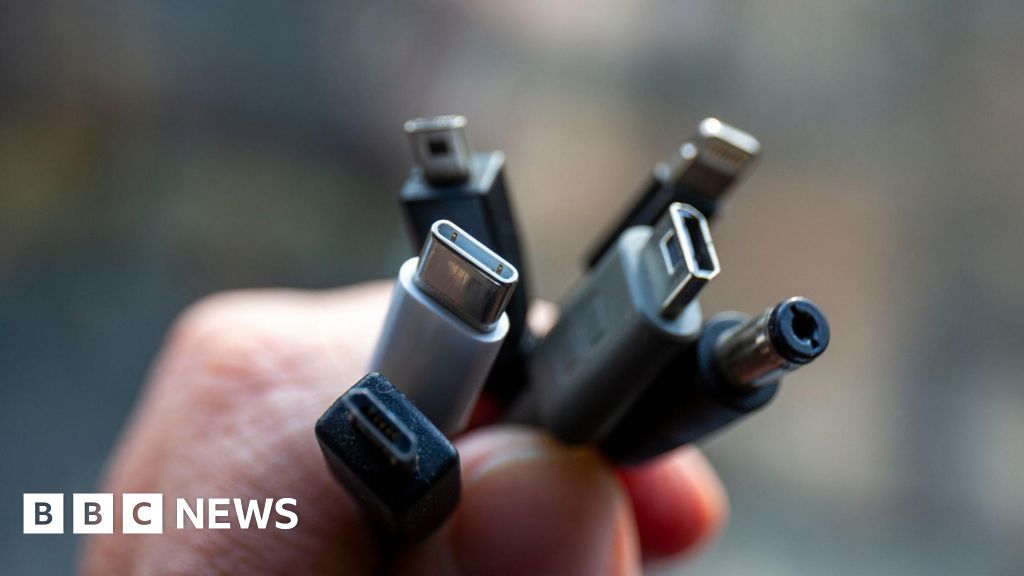
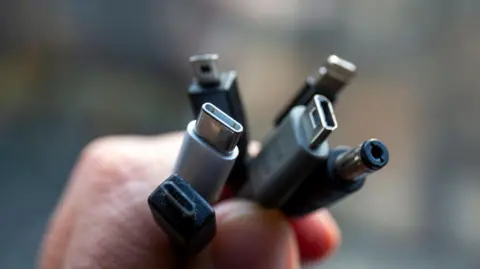 Getty Images
Getty ImagesThe UK government is considering whether to require all new electronic devices to use the same type of charging cable.
A call for evidence launched in October is asking for views on the benefits of using a particular charging cable – such as USB-C, which is used by many modern devices.
It comes after the European Union passed a law on a common charging cable in 2022, which firms must adopt by December.
The UK government said at the time it was not considering similar rules.
The EU’s law aims to cut electronic waste by requiring small to medium electronic device manufacturers to use USB-C chargers.
Apple criticised the decision, but ultimately ditched its proprietary lightning charging cables for iPhones in 2023.
Electronic goods, from mobile phones to e-readers and headphones, still vary in their charging port and cable requirements.
Following the EU’s law, many devices now use USB-C charging cables, although some still require other cables such as micro-USB.
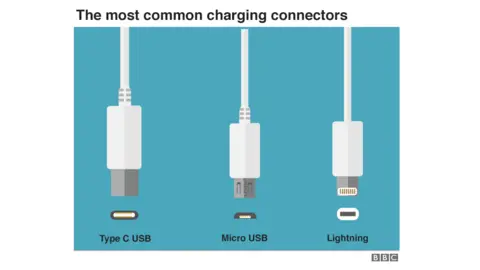
Apple introduced its own proprietary lightning connectors with the iPhone 5 in 2012.
But after more than a decade of use it was phased out and replaced with USB-C ports in more recent versions of its gadgets, starting with the iPhone 15 last September.
Consumer groups have frequently pointed to the amount of different cables needed and discarded based on the varying options for connectors on devices as a source of e-waste.
Materials Focus, a charity encouraging the reuse and recycling of electricals, has been encouraging people to recycle old cables to meet growing demand for their copper contents.
Research by its Recycle Your Electricals campaign suggested the UK had more than 600 million unused or discarded cables.
However, some have previously warned that the EU’s directive will lead to a rise in discarded lightning cables in years to come.
Technology
Future Galaxy AI feature may kill your phone’s Settings page
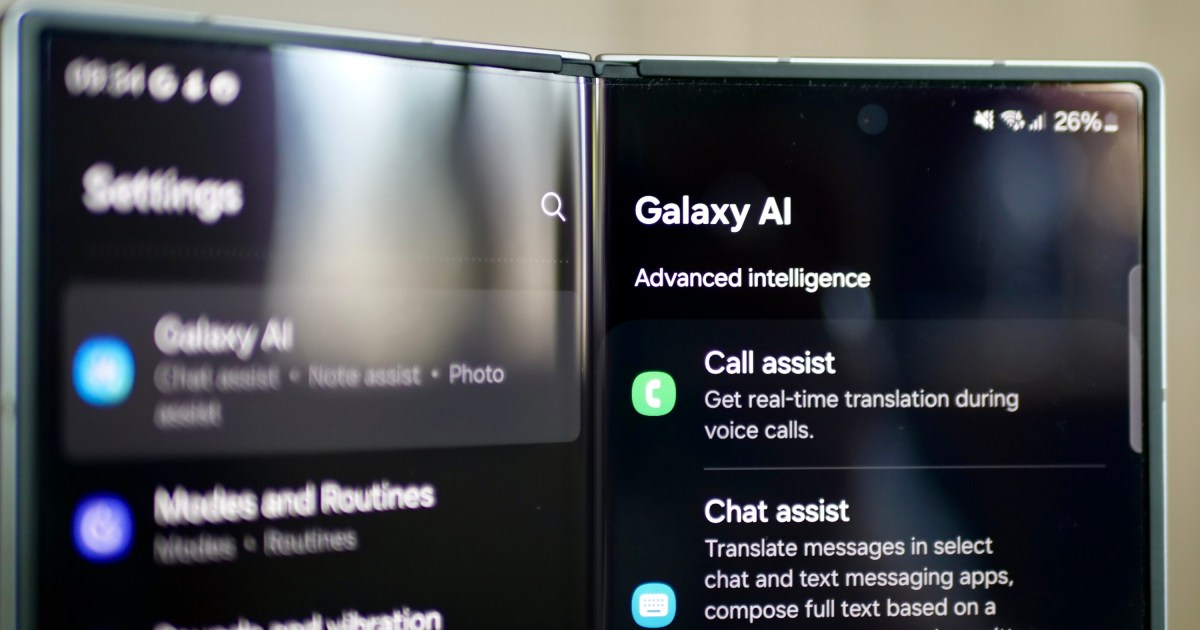

Future Samsung phones may use AI to replace frequent visits to the Settings menu, with the phone anticipating, learning, and altering aspects of the device without you having to dig through different options and menus to make the phone operate in the way you want.
Samsung has already pushed AI functionality as a selling point on its smartphones through Galaxy AI, but the features focus on summaries, translations, notes, and photo editing. By using AI to change the phone’s operation by learning our preferences, or anticipating what we may require during a task, Galaxy AI may be about to take a far more active role in our phones, should several reports prove to be accurate.
According to a report from a South Korean business publication, Samsung is exploring this new AI feature within the keyboard and camera on its phones at this stage, but details on how it will work or what the AI will be able to change have not been revealed. It’s possible the keyboard may automatically change languages or build on its existing ability to generate messages and writing styles, while the camera may activate different filters or set timers, based on circumstances, which are actions that currently require accessing different menus.
Smartphones already adapt to our environments automatically with features like auto brightness enabled by ambient light sensors, and we can use voice control to activate different features without digging into different settings menus. But it’s easy to miss specific features purely because we don’t know they exist, or miss them in large, congested menu pages. If AI could learn how we use our phones, particularly in the early stages, and introduce different features that may improve our experience without us needing to prompt it, it could prove very helpful.
It’s not the first time we’re hearing about what Samsung big plans for its mobile AI future. Samsung’s Head of Customer Experience Patrick Chomet said his dream for Galaxy AI was where he “didn’t need to go to Settings,” in an interview with TechRadar earlier this year, where he also stated he wanted the accessibility menu to be a thing of the past because the, “AI intelligently adapts to me and my needs.” Samsung Mobile’s Head of Business TM Roh wrote the company is, “only getting started” with AI earlier this year following the announcement of the Galaxy S24 series, and these reports indicate interesting things may arrive in the future.
No timeline has been indicated for when this type of feature will arrive in the Galaxy AI suite, but it’s expected Samsung’s next major smartphone release will be the Galaxy S25 series sometime in early 2025.
Technology
Xiaomi 15 Ultra launch timeframe tipped, 200MP camera detailed
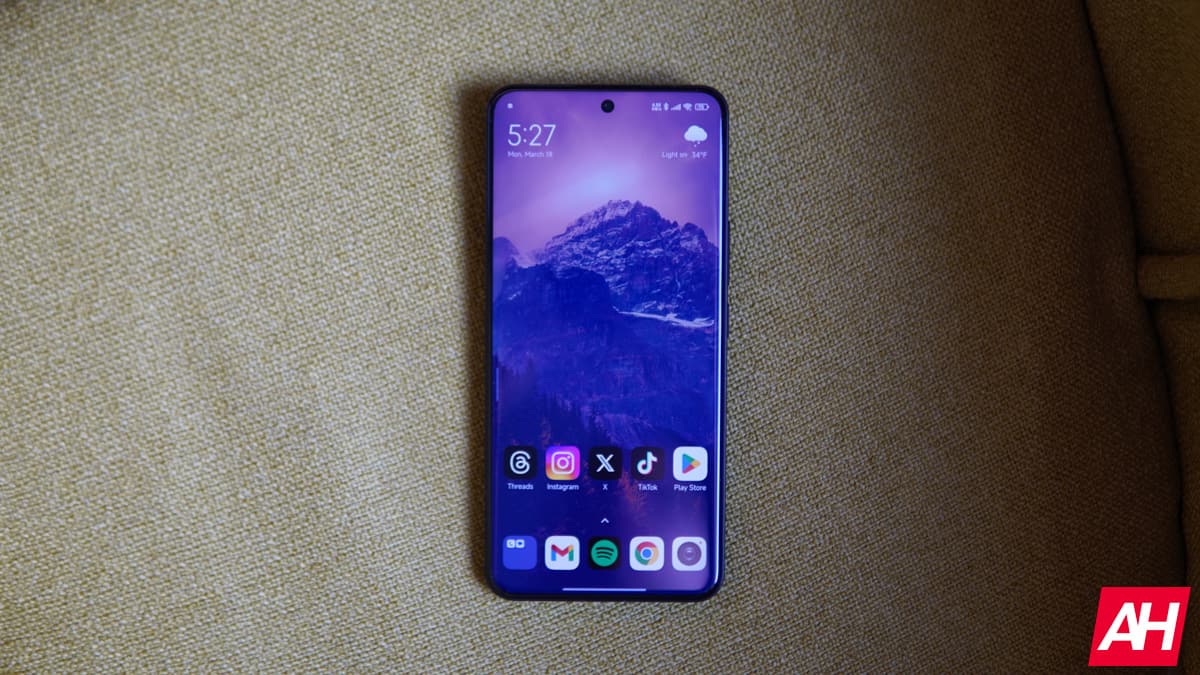
The Xiaomi 15 Ultra launch timeframe has just been tipped, and the phone’s 200MP camera detailed. This information comes from Digital Chat Station, one of the best-known tipsters out there.
The Xiaomi 15 Ultra launch timeframe has appeared, along with 200MP camera details
Let’s start with the launch timeframe, shall we? While responding to a user question, he said that the Xiaomi 15 Ultra is coming “after the New Year”, meaning the Chinese New Year, of course. That means after January 25.
He did not say when exactly, but this kind of points to the first quarter of the year, probably February. That makes all the sense in the world as the Xiaomi 14 Ultra also arrived in February, so… it fits.
The tipster also detailed the 200-megapixel periscope telephoto camera that will be included on the Xiaomi 15 Ultra. That camera will come with a 100mm lens, and allow for 4.3x optical zoom. We’re looking at an f/2.6 aperture here.
In addition to that periscope telephoto camera, the device will also include a 50-megapixel telephoto camera. That camera will offer a 3x optical zoom. It will be the same as on the Xiaomi 15 and Xiaomi 15 Pro.
The Xiaomi 15 and Xiaomi 15 Pro are coming later this month
While the Xiaomi 15 Ultra is coming next year, its siblings, the Xiaomi 15 and Xiaomi 15 Pro will launch later this month. All three of those phones are expected to use Qualcomm’s new flagship chip. That processor will be announced soon, and it will be called either the Snapdragon 8 Gen 4 or Snapdragon 8 Elite.
Based on the renders that we’ve seen recently, and the real-life image of the Xiaomi 15 Pro, Xiaomi will tweak the design a bit, but not much. It’s sticking with its design language from the Xiaomi 14 series.
Both of those smartphones will be quite powerful, though the ‘Ultra’ will trump them in the camera department. It will be a more versatile shooter, even though the ‘Pro’ model is getting a periscope telephoto camera too.
Technology
NASA’s Europa Clipper mission is on its way to Jupiter

NASA has launched its Europa Clipper spacecraft, the biggest one it has ever built for a mission heading to another planet, on top of a SpaceX Falcon Heavy rocket from the Kennedy Space Center in Florida. Mission controllers at the agency’s Jet Propulsion Laboratory have confirmed that the Europa Clipper successfully separated from the rocket’s second stage and has already deployed the two solar arrays flanking its main body. Now, the spacecraft has started its 1.8 billion-million journey Europa, one of Jupiter’s moons and one of the most promising habitable worlds outside our own planet, which will take it five-and-a-half years to reach.
The Europa Clipper will not be heading straight to Jupiter — it will instead fly by Mars and, in 2026, by Earth to use the planets’ gravity to boost its momentum. NASA’s plan is to use that momentum to slingshot the spacecraft towards the outer solar system. Europa has a thick icy shell that’s estimated to be around 10 to 15 miles thick, covering a saltwater ocean that could have twice the water in our planet’s oceans combined. Since scientists believe that life on our planet originated from the ocean, Europa’s could also host organic compounds and contain energy sources.
“Scientists believe Europa has suitable conditions below its icy surface to support life. Its conditions are water, energy, chemistry and stability,” said Sandra Connelly, the Deputy Associate Administrator in the NASA Science Mission Directorate.
Upon reaching Europa in 2031, the Clipper will fly by the moon 49 times, coming as close as 16 miles to its surface. NASA equipped the spacecraft with nine instruments, including an ice-penetrating radar, cameras and a thermal instrument, housed inside a vault made of titanium and aluminum to protect them from the intense radiation produced by Jupiter. The Clipper will operate its instruments simultaneously every time it passes by the moon to investigate how thick Europa’s outer shell truly is and how deep the ocean underneath all that ice is. It will also look for areas with warmer ice and find any plumes of water vapor that could be escaping from Europa’s icy shell.
Technology
NetEase announces Destiny: Rising, a mobile RPG spin-off of Bungie’s series

NetEase Games announced today that it is developing a free-to-play mobile RPG called Destiny: Rising, set in the same universe as Bungie’s first-person shooter franchise. Bungie itself has licensed the Destiny brand to NetEase, which will develop and publish the title. According to the latter, Destiny: Rising features familiar Destiny characters in unfamiliar settings, as well as both returning and new game modes. At present, the game has no release date.
Destiny: Rising is set in an alternate universe to the primary Destiny canon, in a time after the collapse of civilization and the Dark Age. The game features single-player and co-op play, as well as competitive multiplayer. Players can switch between first-person and third-person modes, and Rising is compatible with both controllers and touch-based controls. It features multiple playable characters, explorable biomes and weapons from which to choose.
Ethan Wang, SVP of NetEase Inc, said in a statement, “With Destiny: Rising, NetEase Games is honored to partner with Bungie to deliver a Destiny-caliber experience to mobile devices. Destiny is an incredible franchise with a passionate and dedicated global fanbase. As huge fans ourselves, we are humbled and thrilled for the opportunity to bring gamers an action-packed RPG shooter set within the Destiny Universe.”
Bungie’s collaboration with NetEase goes back several years, as the two first announced they were working together on a new game in 2018. NetEase also invested over $100 million in Bungie and obtained a minority stake in the developer the next year. At the time, all it revealed about the game was that it wouldn’t affect the development of the mainline Destiny titles.
Source link
Technology
Concourse is building AI to automate financial tasks

In a typical organization, finance is one of the most important functions. Yet teams are often bogged down by manual workflows. According to a survey by Paylocity, an HR software provider, 38% of finance teams spend more than a fourth of their time on manual jobs, like reviewing invoices.
Matthieu Hafemeister, an ex-fintech investor at Andreessen Horowitz, says he’s seen many finance orgs struggle to scale up as a result of all the work they’re doing by hand.
“The status quo for finance is countless point solutions that are cobbled together within the finance department,” Hafemeister told TechCrunch. “Excel continues to be the lowest common denominator, limiting the promise of automation.”
To Hafemeister’s point, most finance departments are indeed heavily reliant on spreadsheets. One survey found that 82% still use Excel files for budgeting, forecasting, and other core financial planning activities.
After experiencing these frustrations firsthand while leading growth at fintech firm Jeeves, Hafemeister decided to team up with Ted Michaels, Jeeves’ previous head of finance and an old friend, to launch a platform to automate financial tasks.
Called Concourse, the platform connects to a businesses’ financial systems to let finance teams retrieve and analyze data, generate charts, and ask ad-hoc questions such as “What’s our non-GAAP revenue?”
“Concourse can proactively surface insights that allow finance teams to be better prepared by enabling them to stay ahead of trends,” Hafemeister said. “Instead of a tool that tries to improve the speed or efficiency of completing a task, Concourse can be given discrete tasks to do entirely on its own.”

Now, finance automation isn’t exactly new technology. Linq recently emerged from stealth with AI to automate aspects of research for financial analysts. Ledge and Doopla are also building a range of finance-specific generative modeling tools.
But what makes Concourse different, according to Hafemeister, is its ability to execute financial workflows with “complex, multi-step operations.” For example, the platform can retrieve data from a company’s NetSuite dashboard to download CSV files, then copy that data to an Excel spreadsheet.
“We leverage large language models to do what they are best suited for and pair them with more traditional methods of data analysis,” Hafemeister explained.
There’s great interest in AI for finance. One poll found that 58% of finance teams are now using some form of AI technology, up 21% from 2023. Grand View Research estimates that the “AI in fintech” segment, worth $9.45 billion three years ago, is growing 16.5% annually.
But to stand a chance of making a dent in the market for finance automation tech, Concourse will have to demonstrate its product’s ROI — a challenging feat. Per Gartner, showing or estimating the value of AI is a top barrier to adopting it for close to half of companies.
Concourse will also have to assuage potential customers’ fears of AI-introduced errors and hallucinations. In a poll of U.K.-based executives by HR specialist Peninsula, 40% said inaccuracies from AI tools were a key concern, followed by concerns around data confidentiality.
Hafemeister said that Concourse employs “a variety of tools and techniques” for fact-checking and validation to try to ensure its AI performs tasks as intended. He added that Concourse doesn’t use companies’ data to train its AI models — at least not without explicit permission — and that the platform only collects data customers share with it.
“Data accuracy is paramount in finance, where answers are typically either entirely correct or entirely incorrect,” Hafemeister said. “As such, at Concourse we’ve spent a lot of time and effort on delivering AI that can accurately perform the task it’s been assigned. We also take data privacy and security very seriously, and have built Concourse using industry best practices.”
Folks seem willing to be take Hafemeister at his word.
Concourse, which is still in beta ahead of a broader launch planned for next year, has several customers, including Instabase and Shef, and $4.7 million in capital. Hafemeister’s ex-employer, a16z, has invested in the startup, along with Y Combinator, CRV, and Box Group.
Hafemeister says the focus at the moment is product development and growing New York-based Concourse’s six-person staff.
“We raised money to hire more engineers, build out more workflows that our AI can take on, increase coverage on data integrations, and start to scale our go-to-market function,” he said. “The strong focus on engineering recruiting is to hire backend, machine learning, and AI engineers.”
-

 Science & Environment4 weeks ago
Science & Environment4 weeks agoHyperelastic gel is one of the stretchiest materials known to science
-

 Technology4 weeks ago
Technology4 weeks agoWould-be reality TV contestants ‘not looking real’
-

 Science & Environment4 weeks ago
Science & Environment4 weeks agoHow to unsnarl a tangle of threads, according to physics
-

 Science & Environment4 weeks ago
Science & Environment4 weeks ago‘Running of the bulls’ festival crowds move like charged particles
-

 Science & Environment4 weeks ago
Science & Environment4 weeks agoMaxwell’s demon charges quantum batteries inside of a quantum computer
-

 Science & Environment4 weeks ago
Science & Environment4 weeks agoLiquid crystals could improve quantum communication devices
-

 Technology3 weeks ago
Technology3 weeks agoIs sharing your smartphone PIN part of a healthy relationship?
-

 Womens Workouts3 weeks ago
Womens Workouts3 weeks ago3 Day Full Body Women’s Dumbbell Only Workout
-

 Science & Environment4 weeks ago
Science & Environment4 weeks agoQuantum ‘supersolid’ matter stirred using magnets
-

 Science & Environment3 weeks ago
Science & Environment3 weeks agoX-rays reveal half-billion-year-old insect ancestor
-

 Science & Environment4 weeks ago
Science & Environment4 weeks agoWhy this is a golden age for life to thrive across the universe
-

 Science & Environment4 weeks ago
Science & Environment4 weeks agoSunlight-trapping device can generate temperatures over 1000°C
-

 Science & Environment4 weeks ago
Science & Environment4 weeks agoNerve fibres in the brain could generate quantum entanglement
-

 Science & Environment4 weeks ago
Science & Environment4 weeks agoQuantum forces used to automatically assemble tiny device
-

 Science & Environment4 weeks ago
Science & Environment4 weeks agoITER: Is the world’s biggest fusion experiment dead after new delay to 2035?
-

 Science & Environment4 weeks ago
Science & Environment4 weeks agoHow to wrap your mind around the real multiverse
-

 Science & Environment4 weeks ago
Science & Environment4 weeks agoA slight curve helps rocks make the biggest splash
-
News4 weeks ago
the pick of new debut fiction
-

 Science & Environment4 weeks ago
Science & Environment4 weeks agoLaser helps turn an electron into a coil of mass and charge
-

 News3 weeks ago
News3 weeks agoOur millionaire neighbour blocks us from using public footpath & screams at us in street.. it’s like living in a WARZONE – WordupNews
-

 Science & Environment4 weeks ago
Science & Environment4 weeks agoTime travel sci-fi novel is a rip-roaringly good thought experiment
-

 Science & Environment4 weeks ago
Science & Environment4 weeks agoPhysicists are grappling with their own reproducibility crisis
-

 Science & Environment4 weeks ago
Science & Environment4 weeks agoNuclear fusion experiment overcomes two key operating hurdles
-

 News4 weeks ago
News4 weeks ago▶️ Hamas in the West Bank: Rising Support and Deadly Attacks You Might Not Know About
-

 News4 weeks ago
News4 weeks agoYou’re a Hypocrite, And So Am I
-
Business2 weeks ago
Eurosceptic Andrej Babiš eyes return to power in Czech Republic
-

 Sport4 weeks ago
Sport4 weeks agoJoshua vs Dubois: Chris Eubank Jr says ‘AJ’ could beat Tyson Fury and any other heavyweight in the world
-

 Science & Environment4 weeks ago
Science & Environment4 weeks agoA new kind of experiment at the Large Hadron Collider could unravel quantum reality
-

 News4 weeks ago
News4 weeks ago▶️ Media Bias: How They Spin Attack on Hezbollah and Ignore the Reality
-

 Science & Environment4 weeks ago
Science & Environment4 weeks agoCaroline Ellison aims to duck prison sentence for role in FTX collapse
-

 News4 weeks ago
News4 weeks agoNew investigation ordered into ‘doorstep murder’ of Alistair Wilson
-

 Technology3 weeks ago
Technology3 weeks agoWhy Machines Learn: A clever primer makes sense of what makes AI possible
-

 Technology2 weeks ago
Technology2 weeks agoQuantum computers may work better when they ignore causality
-
Business2 weeks ago
Should London’s tax exiles head for Spain, Italy . . . or Wales?
-

 Football2 weeks ago
Football2 weeks agoFootball Focus: Martin Keown on Liverpool’s Alisson Becker
-

 Sport2 weeks ago
Sport2 weeks agoWatch UFC star deliver ‘one of the most brutal knockouts ever’ that left opponent laid spark out on the canvas
-

 Science & Environment4 weeks ago
Science & Environment4 weeks agoRethinking space and time could let us do away with dark matter
-

 Science & Environment4 weeks ago
Science & Environment4 weeks agoA tale of two mysteries: ghostly neutrinos and the proton decay puzzle
-
News4 weeks ago
The Project Censored Newsletter – May 2024
-

 Technology2 weeks ago
Technology2 weeks ago‘From a toaster to a server’: UK startup promises 5x ‘speed up without changing a line of code’ as it plans to take on Nvidia, AMD in the generative AI battlefield
-

 MMA2 weeks ago
MMA2 weeks agoConor McGregor challenges ‘woeful’ Belal Muhammad, tells Ilia Topuria it’s ‘on sight’
-

 News4 weeks ago
News4 weeks agoIsrael strikes Lebanese targets as Hizbollah chief warns of ‘red lines’ crossed
-

 Health & fitness4 weeks ago
Health & fitness4 weeks agoThe secret to a six pack – and how to keep your washboard abs in 2022
-

 Science & Environment4 weeks ago
Science & Environment4 weeks agoFuture of fusion: How the UK’s JET reactor paved the way for ITER
-

 Technology2 weeks ago
Technology2 weeks agoMicrophone made of atom-thick graphene could be used in smartphones
-
Business2 weeks ago
Ukraine faces its darkest hour
-
Politics3 weeks ago
Robert Jenrick vows to cut aid to countries that do not take back refused asylum seekers | Robert Jenrick
-

 Technology4 weeks ago
Technology4 weeks agoThe ‘superfood’ taking over fields in northern India
-

 Science & Environment4 weeks ago
Science & Environment4 weeks agoUK spurns European invitation to join ITER nuclear fusion project
-

 CryptoCurrency4 weeks ago
CryptoCurrency4 weeks agoCardano founder to meet Argentina president Javier Milei
-

 News3 weeks ago
News3 weeks agoWhy Is Everyone Excited About These Smart Insoles?
-

 Technology3 weeks ago
Technology3 weeks agoGet ready for Meta Connect
-

 Technology2 weeks ago
Technology2 weeks agoUniversity examiners fail to spot ChatGPT answers in real-world test
-

 Science & Environment4 weeks ago
Science & Environment4 weeks agoPhysicists have worked out how to melt any material
-

 Sport4 weeks ago
Sport4 weeks agoUFC Edmonton fight card revealed, including Brandon Moreno vs. Amir Albazi headliner
-

 Science & Environment4 weeks ago
Science & Environment4 weeks agoWhy we need to invoke philosophy to judge bizarre concepts in science
-
Politics4 weeks ago
UK consumer confidence falls sharply amid fears of ‘painful’ budget | Economics
-

 TV3 weeks ago
TV3 weeks agoCNN TÜRK – 🔴 Canlı Yayın ᴴᴰ – Canlı TV izle
-

 Science & Environment3 weeks ago
Science & Environment3 weeks agoMeet the world's first female male model | 7.30
-

 Womens Workouts3 weeks ago
Womens Workouts3 weeks ago3 Day Full Body Toning Workout for Women
-

 Technology3 weeks ago
Technology3 weeks agoRobo-tuna reveals how foldable fins help the speedy fish manoeuvre
-

 Health & fitness2 weeks ago
Health & fitness2 weeks agoThe 7 lifestyle habits you can stop now for a slimmer face by next week
-

 CryptoCurrency4 weeks ago
CryptoCurrency4 weeks agoEthereum is a 'contrarian bet' into 2025, says Bitwise exec
-

 Science & Environment4 weeks ago
Science & Environment4 weeks agoBeing in two places at once could make a quantum battery charge faster
-

 News4 weeks ago
News4 weeks agoHow FedEx CEO Raj Subramaniam Is Adapting to a Post-Pandemic Economy
-

 CryptoCurrency4 weeks ago
CryptoCurrency4 weeks agoDecentraland X account hacked, phishing scam targets MANA airdrop
-

 CryptoCurrency4 weeks ago
CryptoCurrency4 weeks agoBitcoin miners steamrolled after electricity thefts, exchange ‘closure’ scam: Asia Express
-

 CryptoCurrency4 weeks ago
CryptoCurrency4 weeks agoDZ Bank partners with Boerse Stuttgart for crypto trading
-

 CryptoCurrency4 weeks ago
CryptoCurrency4 weeks agoLow users, sex predators kill Korean metaverses, 3AC sues Terra: Asia Express
-

 CryptoCurrency4 weeks ago
CryptoCurrency4 weeks agoBlockdaemon mulls 2026 IPO: Report
-
Business4 weeks ago
Thames Water seeks extension on debt terms to avoid renationalisation
-
Politics4 weeks ago
‘Appalling’ rows over Sue Gray must stop, senior ministers say | Sue Gray
-

 MMA3 weeks ago
MMA3 weeks agoRankings Show: Is Umar Nurmagomedov a lock to become UFC champion?
-

 Womens Workouts3 weeks ago
Womens Workouts3 weeks agoBest Exercises if You Want to Build a Great Physique
-

 Womens Workouts3 weeks ago
Womens Workouts3 weeks agoEverything a Beginner Needs to Know About Squatting
-

 News3 weeks ago
News3 weeks agoFour dead & 18 injured in horror mass shooting with victims ‘caught in crossfire’ as cops hunt multiple gunmen
-

 Servers computers3 weeks ago
Servers computers3 weeks agoWhat are the benefits of Blade servers compared to rack servers?
-

 Business2 weeks ago
Business2 weeks agoWhen to tip and when not to tip
-

 Entertainment1 week ago
Entertainment1 week agoChristopher Ciccone, artist and Madonna’s younger brother, dies at 63
-

 News4 weeks ago
News4 weeks agoChurch same-sex split affecting bishop appointments
-

 Politics4 weeks ago
Politics4 weeks agoTrump says he will meet with Indian Prime Minister Narendra Modi next week
-

 News4 weeks ago
News4 weeks agoBrian Tyree Henry on voicing young Megatron, his love for villain roles
-

 Health & fitness4 weeks ago
Health & fitness4 weeks agoThe maps that could hold the secret to curing cancer
-

 Science & Environment4 weeks ago
Science & Environment4 weeks agoTiny magnet could help measure gravity on the quantum scale
-

 CryptoCurrency4 weeks ago
CryptoCurrency4 weeks agoDorsey’s ‘marketplace of algorithms’ could fix social media… so why hasn’t it?
-

 CryptoCurrency4 weeks ago
CryptoCurrency4 weeks agoBitcoin bulls target $64K BTC price hurdle as US stocks eye new record
-

 News4 weeks ago
News4 weeks agoBrian Tyree Henry on voicing young Megatron, his love for villain roles
-

 CryptoCurrency4 weeks ago
CryptoCurrency4 weeks agoCoinbase’s cbBTC surges to third-largest wrapped BTC token in just one week
-

 Travel3 weeks ago
Travel3 weeks agoDelta signs codeshare agreement with SAS
-

 Technology2 weeks ago
Technology2 weeks agoThe best robot vacuum cleaners of 2024
-

 Science & Environment4 weeks ago
Science & Environment4 weeks agoHow one theory ties together everything we know about the universe
-
Business4 weeks ago
JPMorgan in talks to take over Apple credit card from Goldman Sachs
-

 Science & Environment4 weeks ago
Science & Environment4 weeks agoQuantum time travel: The experiment to ‘send a particle into the past’
-
Business4 weeks ago
How Labour donor’s largesse tarnished government’s squeaky clean image
-

 Science & Environment3 weeks ago
Science & Environment3 weeks agoCNN TÜRK – 🔴 Canlı Yayın ᴴᴰ – Canlı TV izle
-

 News3 weeks ago
News3 weeks agoShocking ‘kidnap’ sees man, 87, bundled into car, blindfolded & thrown onto dark road as two arrested
-

 Politics3 weeks ago
Politics3 weeks agoHope, finally? Keir Starmer’s first conference in power – podcast | News
-

 News3 weeks ago
News3 weeks agoUS Newspapers Diluting Democratic Discourse with Political Bias
-
Business2 weeks ago
DoJ accuses Donald Trump of ‘private criminal effort’ to overturn 2020 election
-

 Technology4 weeks ago
Technology4 weeks agoiPhone 15 Pro Max Camera Review: Depth and Reach


You must be logged in to post a comment Login